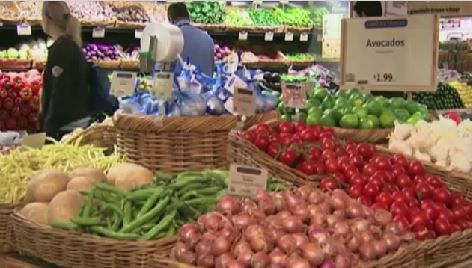FRANKFORT, Ky- The status of Kentucky’s farm to food banks program was a topic of a committee Wednesday.
The Tobacco Settlement Agreement Fund Oversight Committee heard from Feeding Kentucky on the statistics surrounding food insecurity in Kentucky and how the program brings farm fresh produce directly to those in need.
The numbers surrounding food insecurity for children in Kentucky are alarming. Nearly 200,000 children, or 1 in 5, faces food insecurity. This affects every county, but Magoffin, Clay, Elliot, Robertson and Breathitt Counties face the highest level of food insecurity among children.
“This leads to long-term negative impacts cognitively, socially, emotionally, these are our future workers. If they are not able to concentrate in school it’s going to impact us down the road,” said Tamara Sandberg, Executive Director Feeding Kentucky. “We are determined to change that statistic and reduce the number of kids in Kentucky.”
Seniors don’t fare any better, Kentucky has the highest rate in the nation of seniors 50-59 struggling with food insecurity. About 1 in 5 seniors is food insecure.
The Farm to Food banks program has been instrumental in helping those in need have access to fresh food while also helping farmers diversify away from tobacco.
“There are three main goals of the farms to food banks program, one is to increase access to healthy foods to our struggling neighbors, one is to provide a fair price to farmers to help recoup their losses for their unmarketable or number two produce, and then the third goal is to reduce the amount of food that gets wasted,” said Sara Vaughn, Program Coordinator for Feeding Kentucky.
In 2018, the program was able to provide over 3 million pounds of produce and supplemented over 5 million meals with 22 different types of produce. While these numbers are high, Vaughn says they were not able to supply fresh produce to all 120 counties in the commonwealth, in part due to budget cuts from the General Assembly.
“We believe this may have been in part due to the $100,000 cut that we received from state funding,” Vaughn said.
On average farmers receive about $1,600 from participating in the program. Since the program began in 2011, Feeding Kentucky has given farmers $3.6 million.
Feeding Kentucky’s KY Kids Eat program was also discussed during the committee, as the name states the program focuses on providing food to children.
“Summertime is a really important and crucial piece of our work because most of the kids the receive free lunch during the school year, a lot of those kids are struggling in the summer,” said Kate McDonald, KY Kids Eat Coordinator. “Only 1 in 12 that receives a free lunch in school will receive access to a free summer meal. That puts us really low on the totem pole when it comes to participation. Kentucky ranks 46th out of the 50 states when it comes to the amount of meals that we’re serving to hungry kids.”
Kentucky’s Double Dollar Program was also discussed during the meeting.
This program helps increase the low-income population with access to fresh and healthy food while increasing sales and income to Kentucky farmers by leveraging federal food and nutrition program funds.



